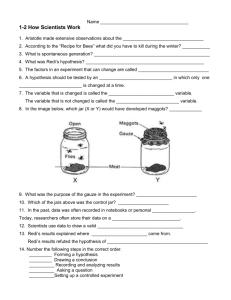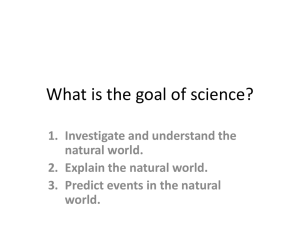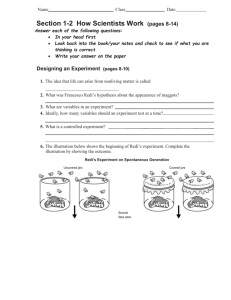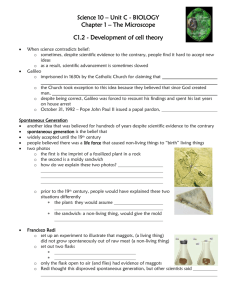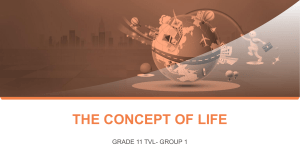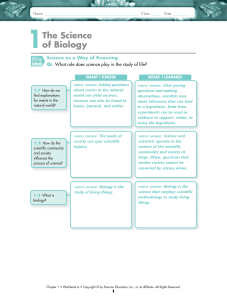spontaneous generation, cell theory
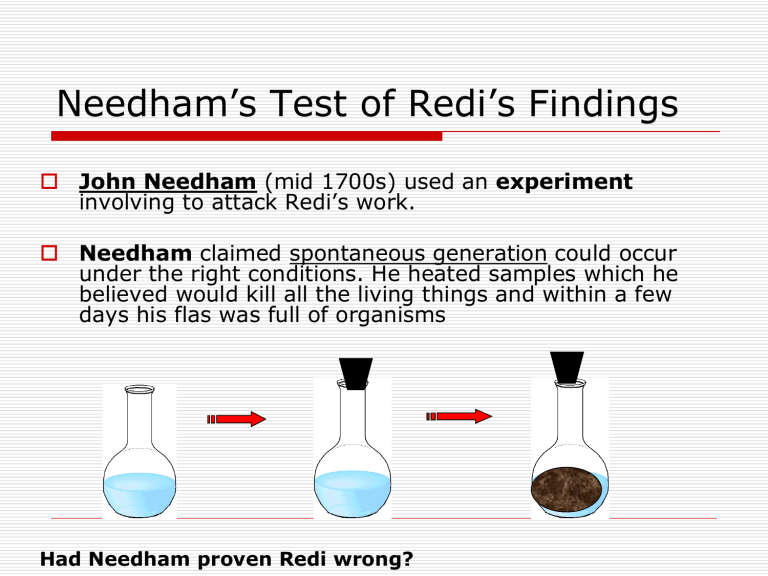
Needham’s Test of Redi’s Findings
John Needham (mid 1700s) used an experiment involving to attack Redi’s work.
Needham claimed spontaneous generation could occur under the right conditions. He heated samples which he believed would kill all the living things and within a few days his flas was full of organisms
Had Needham proven Redi wrong?
Spallanzani’s 1768 Test of Redi’s Findings
Lazzaro Spallanzani said the Neeham had not heated his samples enough.
Boiled the flasks longer
No microbes
Remove the stopper
Microbes
Proved that microbes came from the air NOT non-living matter
Pasteur’s Test of Spontaneous
Generation
(1800’s)
He designed a flask that had a long curved neck. The flask remained open to air, but microorganisms from the air could not make their way through the neck into the flask.
He showed that as long as the broth was protected from microorganisms (not air) it would remain free of living things.
NO microbes
≈ 1 year
Flask broken
He broke the neck of the flask after about a year of experimenting and the broth quickly became filled with microorganisms.
His work convinced other scientists that the hypothesis of spontaneous generation was incorrect.
Pasteur showed that all living things come from other living things.
This represented a major shift in the way scientists viewed living things.
Theories…
are explanations to ideas. They have been well-tested!
The Microscope
Its invention revealed the presence of microorganisms!
The development of the cell theory:
Hans & Zacharias Janssen – first to produce compound microscope
Robert Hooke was the first to describe cells after looking at cork under a microscope. (1665)
Meanwhile van Leeuwenhoek was observing living things in pond water, called them “animacules” (1680)
About 200 years pass ….
Schleiden (a German botanist) was observing cells in plants
(1838), while Schwann (a German biologist) was observing cells in animals. (1839). Anounced cell theory “ all living things come from living things”
Conclusion: All plants and animals are made of cells.
Virchow observed and concluded that new cells came from other cells, cell division (1855)
The Cell Theory was developed based on the work of these and other scientists…
The cell theory states that :
the cell is the basic unit of life;
all living organisms are made of one or many cells.
all cells come from pre-existing cells.
The modern version of the Cell
Theory includes the ideas that:
* Energy flow occurs within cells.
* Heredity information (DNA) is passed on from cell to cell.
* All cells have the same basic chemical composition.
Journal
1.
Why do you think it is so important to have channels of communication, such as scientific journals for scientists to share their work?
2.
How did the invention of the microscope contribute to cell theory?
